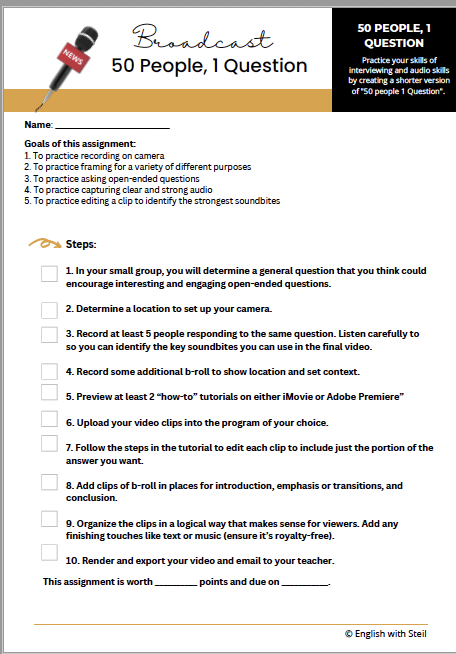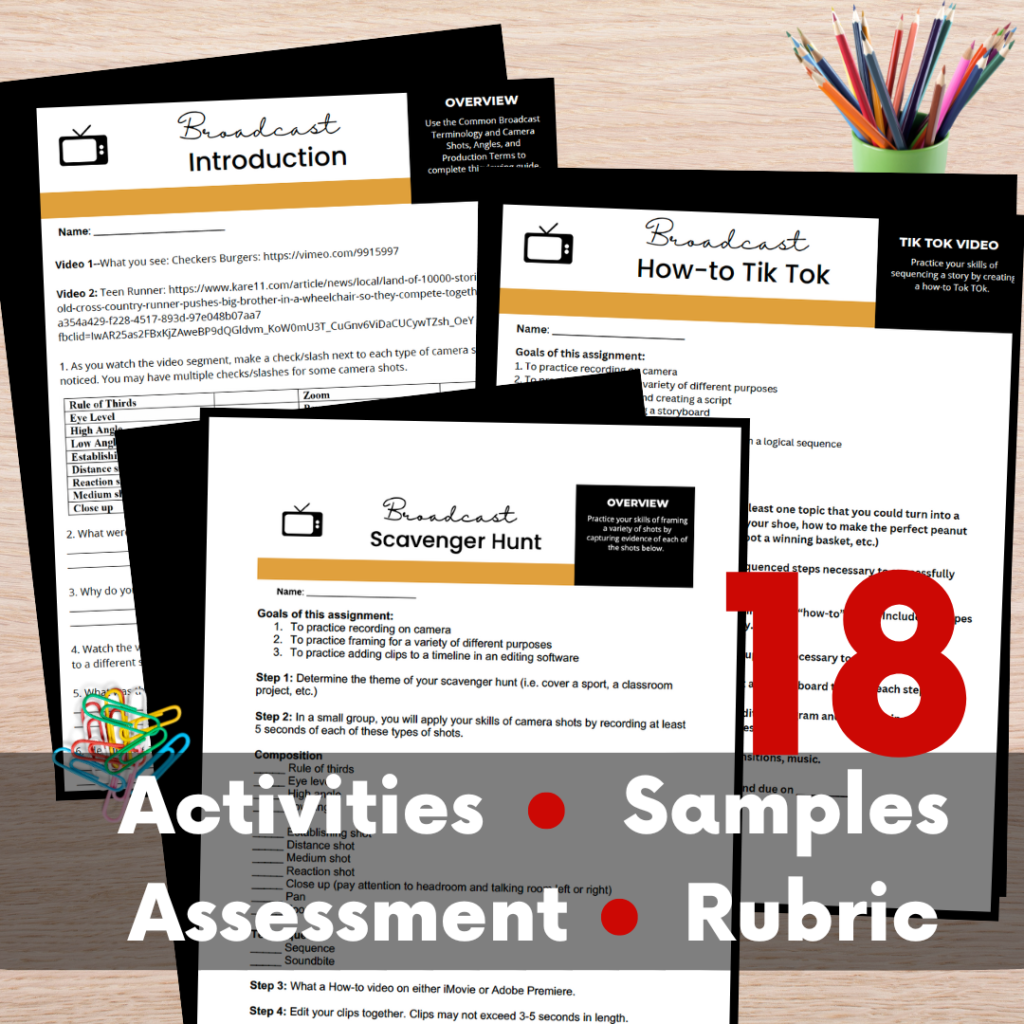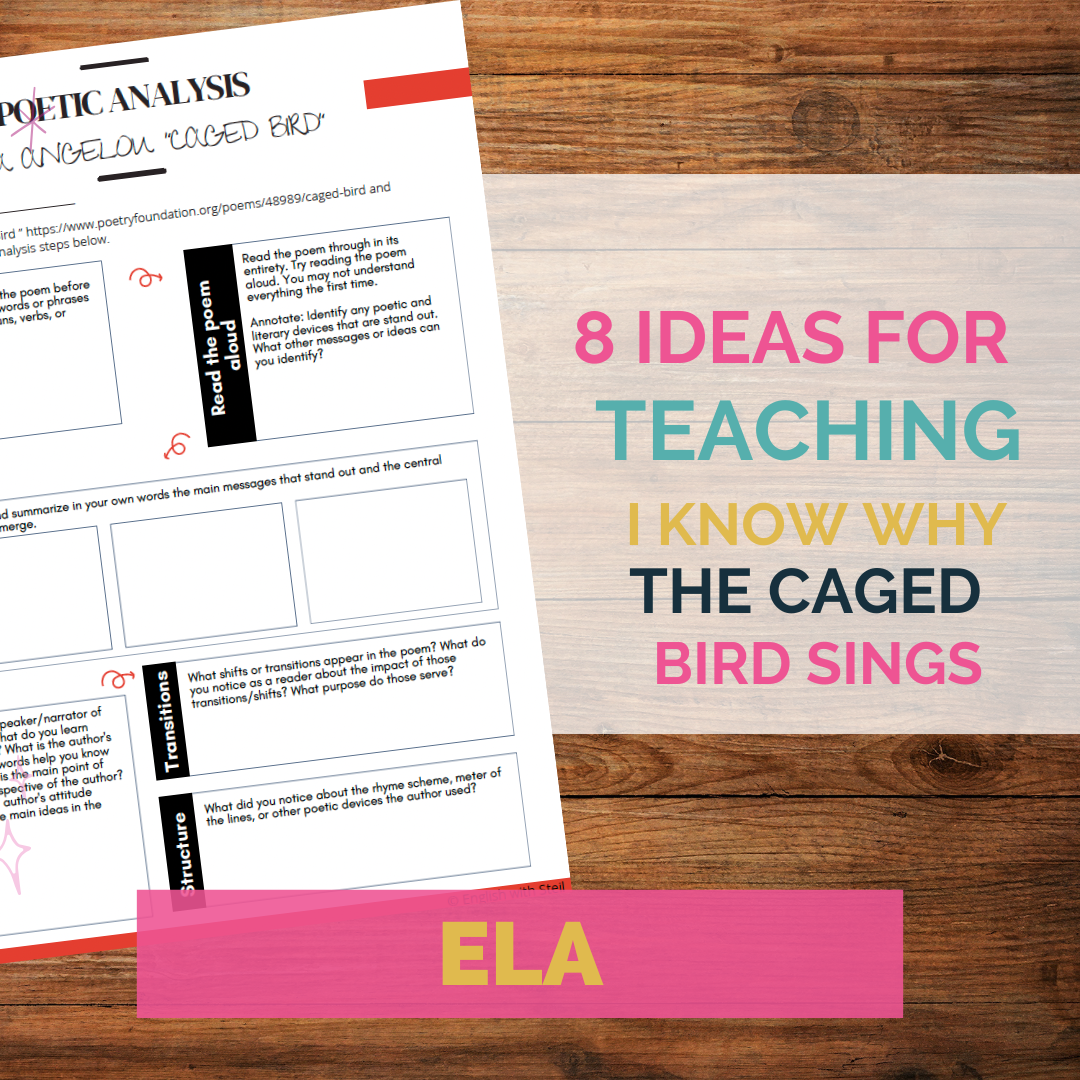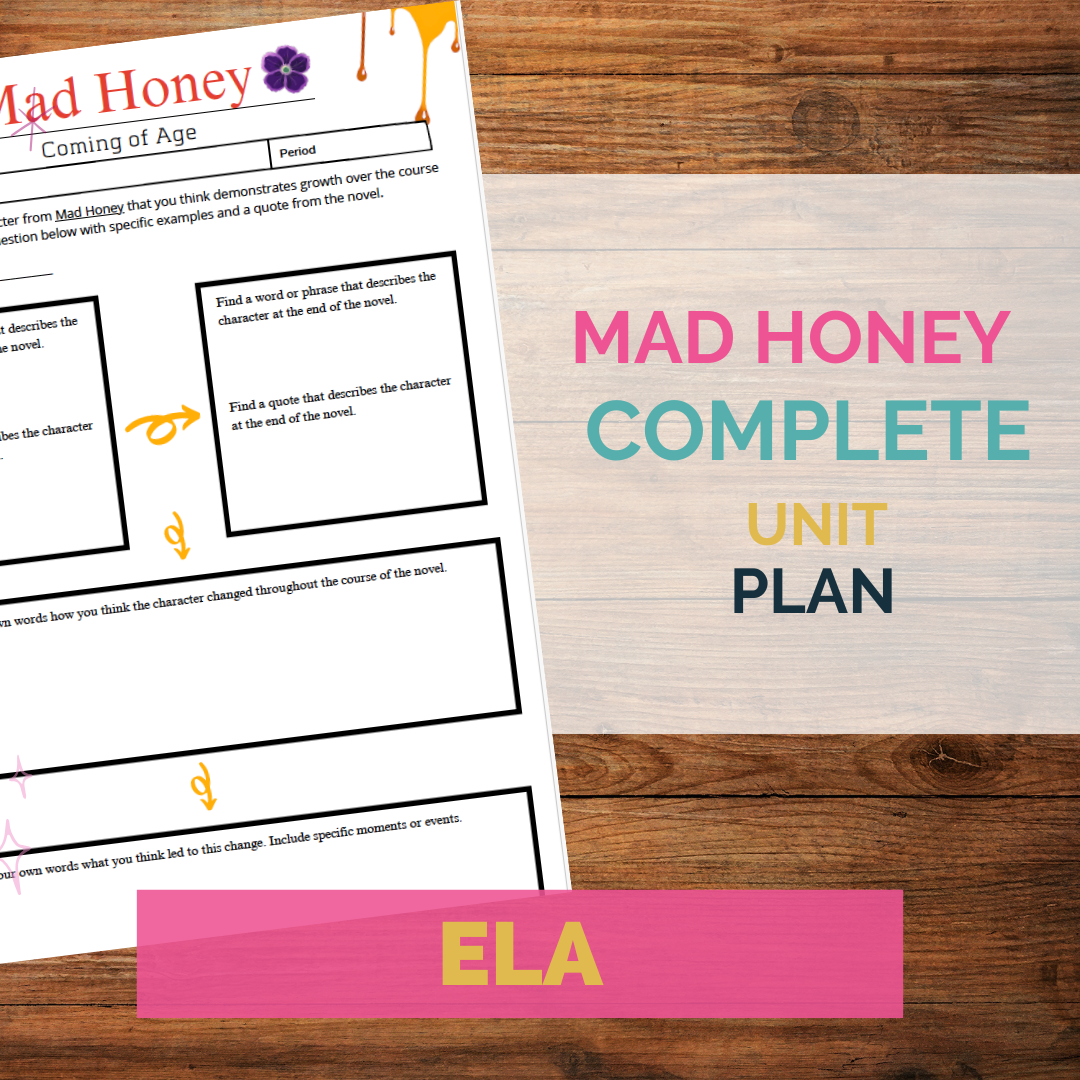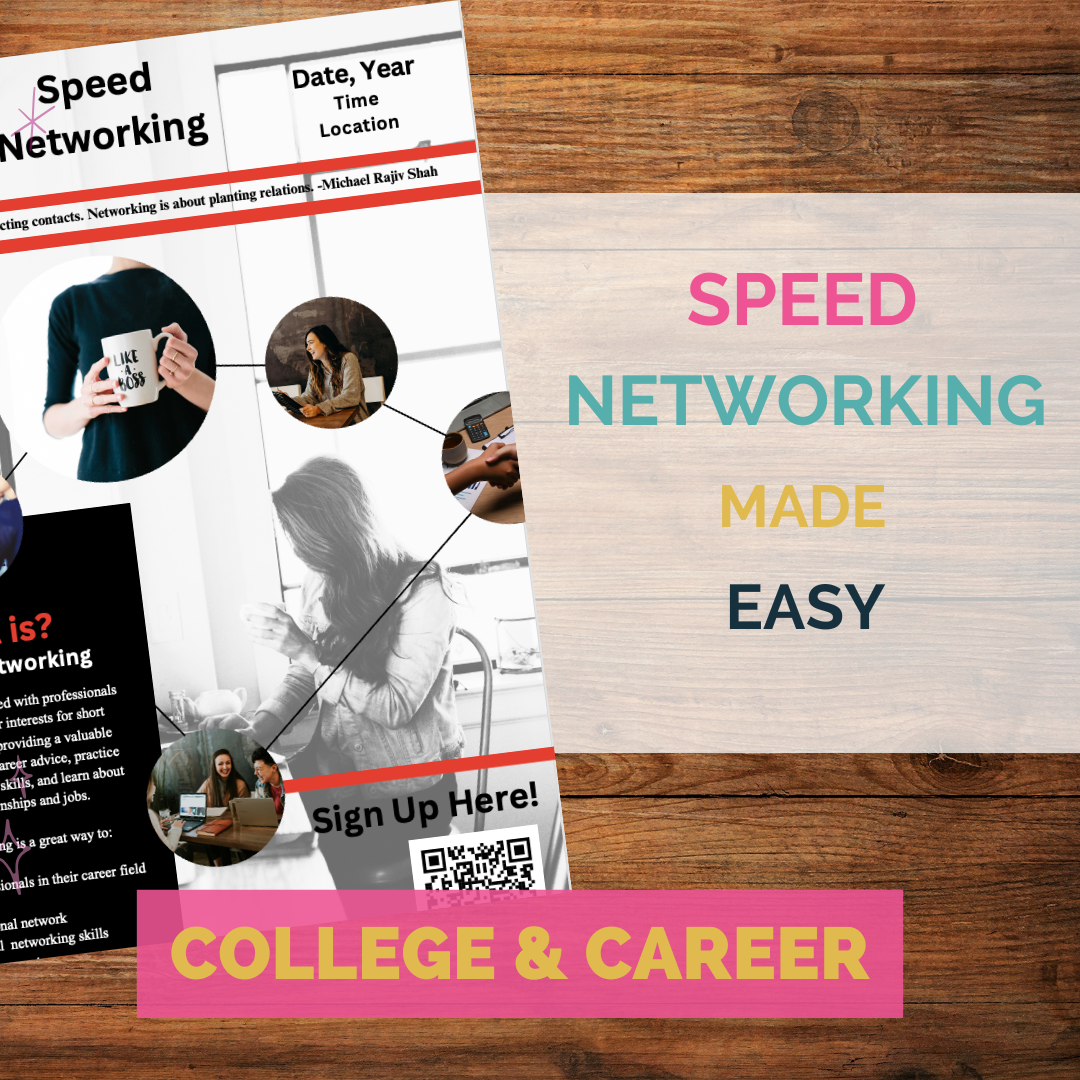The "Why" behind teaching broadcast
One of my absolute favorite units to teach during my journalism class is our broadcast journalism unit. It allows us to combine all of news writing, feature writing, and visual literacy skills into one complete package. My students find this to be the most engaging and fun things we do throughout the course of a year!
I start off with a brief introduction to broadcast journalism. I teach students about how powerful broadcast is as a medium to help shape public opinion, touch hearts, and inspire viewers. Through the use of emotion and imagery, broadcast brings a greater degree of impact compared to the written story. We watch a variety of feature stories by my favorite journalist Boyd Huppert from the NBC affiliate. As we watch, we listen we watch for:
- Message, audience, and interest
- How the reporter tells the story through pictures.
- How this story impacts reviewers in a way a written story would not.
A fun warm-up activity: Story of My Life
As an introduction to my unit, I have students create a “Story of my Life” video on iMovie. This is a great way to build relationships in my class, while introducing some very basic video creation concepts. Students learn all about how to add images to a timeline, organize a script, and export a short video. I let them pick any topic that they can find pictures or videos to support.
- Some ideas to get them started are:
- Your life in a sport or activity
- Your favorite family moments
- My life in pictures
- Moments with my friends
- A memorable vacation
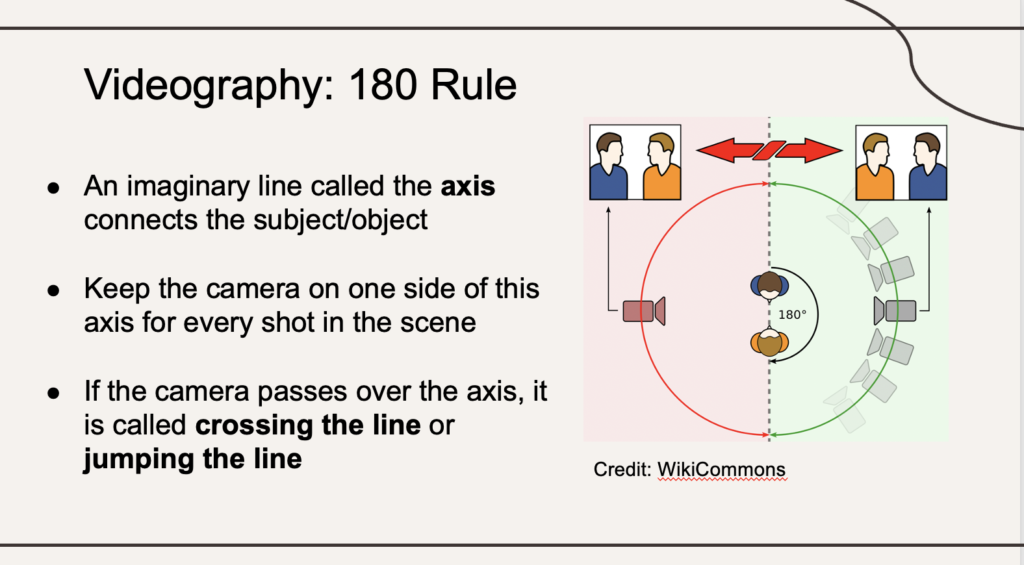

Building the basics: videography and composition
To start this unit, I teach my students basic videography and composition terms.
In order to create a powerful and professional video, students need composition terms:
- rule of thirds
- eye level
- high angle
- low angle
From there, I teach students the most basic camera shots they will need to know to put together a news package.
- establishing shot
- distant shot
- reaction shot
- medium and close-up shot
- how to zoom and pan
Once students have the various camera shots down, I have them do a simple scavenger hunt to practice their videography and camera skills. They use their personal devices to record a few sections of all of the types of composition terms and shots listed above. I have them upload each shot into a Google folder so they can have a portfolio of examples for future use!
Building the basics: lighting, audio, and interviews
Once students get more comfortable with the videography basics, I start to layer on instruction and lighting, audio, and how to record interviews.
Audio
Starting with audio, I introduced students to some basic, and instruction around types of mics like Lavalier, boom, and handheld. Then we practice learning the different cables, adapters, and mixers. I also spent some time teaching kids how to enhance their sound during their interviews.
My top tips for Natural Sound (NATS)
Lighting
When I introduce lighting concepts we talk about various different types of light like ambient light, back like color color temperature, and contrast. I also help students understand technology that can help create better lighting situation like a light meter, nightstand, and reflector.
My top tips for natural and outdoor lighting:
Interviewing
Teaching students about interviewing is the “meat and potatoes” of any good broadcast piece. I show my students a clip of 50 People 1 Question to show them how to ask strong questions and listen for engaging soundbites. It is also a great model for camera shots and framing interviews.
Here are some simple guidelines for preparing for the interview:
I also review common types of questions and interviewing techniques. It’s important in broadcast interviews to not only ensure you are asking strong questions, but also the camera composition and framing is accurate (i.e. talking room and rule of thirds).
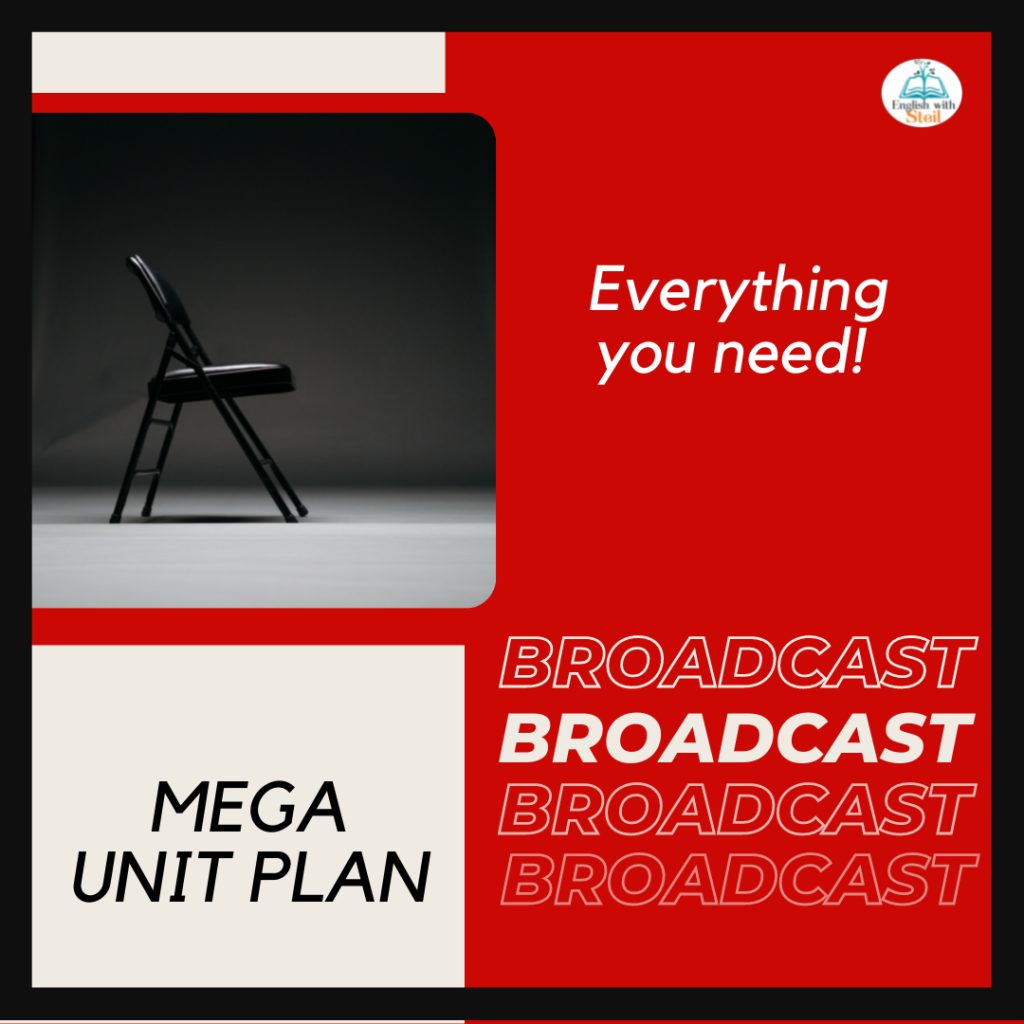
In order to practice audio, lighting, and interviews, I have my students create their own 50 People 1 Question video with their classmates or peers in the school. My students find this challenge exciting when they can apply all of the skills learned in this unit.
Putting it all together
Once students have learned and practiced the basics, I have them work in small teams to create a broadcast news piece modeled off of the Boyd Huppert feature story examples we viewed in class. From beginning to end, this is an engaging and hands-out unit to teach story structure, writing, videography techniques, and editing!

